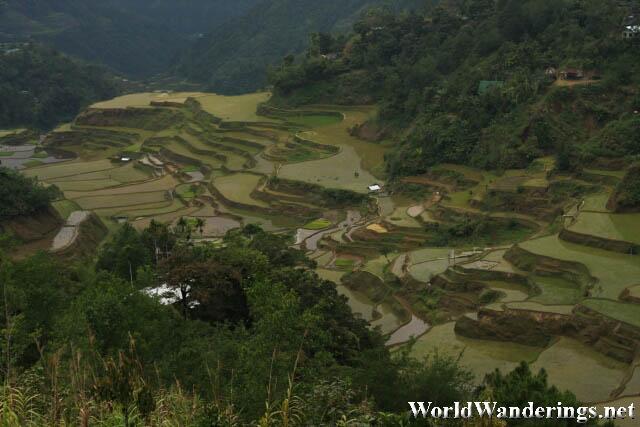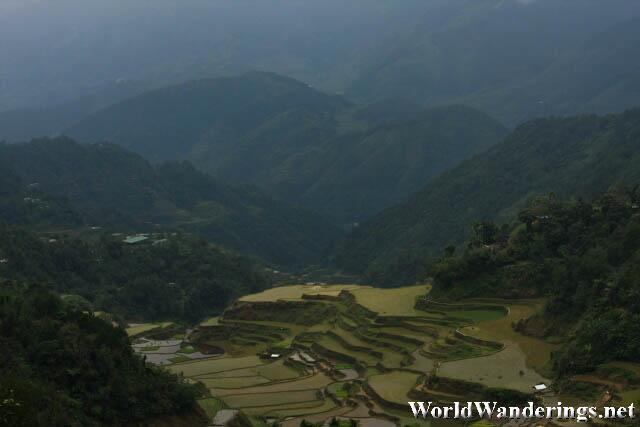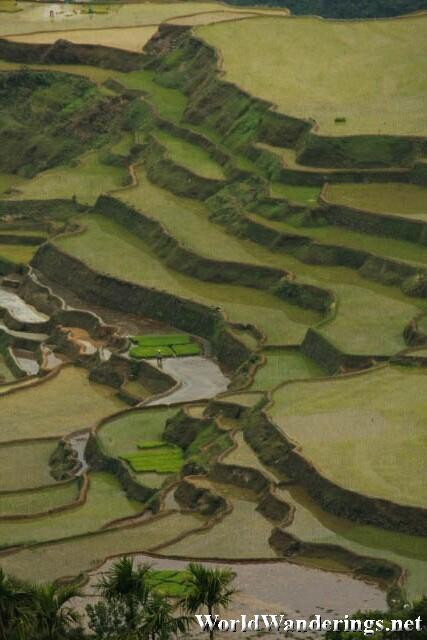After exploring the native Ifugao hut, the owner of the Tiwang Ethnic Village asked us to climb a short series of steps going up a small hill. There was a nice viewing deck on top where visitors can see a lot of the surrounding area. On one side visitors can see the Banaue Rice Terraces, but they are not very visible since there are a lot of plants in the way. However, the other side has marvelous views of a neighboring cluster of rice terraces known as the Hapao Rice Terraces.
As the name suggests, these group of rice terraces are situated in the village of Hapao just a short distance away. The rice terraces are mostly carved out of the bottom of a valley and they do not climb up to spectacular heights like that Banaue Rice Terraces or the ones in Batad. They do look every bit as impressive as the other ones and since they are still actively being used they are very well maintained. The fields are all green with the growing rice.
Alas, we can only stand there are look at the Hapao Rice Terraces since going there would take a lot more time that I what I can afford. In the distance, there is a nother set of rice terraces in the village of Hungduan. Maybe next time I would get a chance to visit these villages. I had no idea there were so many of these rice terraces here. It only goes to show that rice terraces are really a way of life for these people and it is a constant lesson for us to learn from them how to live in harmony with nature as they have.
[xmlgm {http://www.worldwanderings.net/kml/Banaue.kmz} zoom=14]


